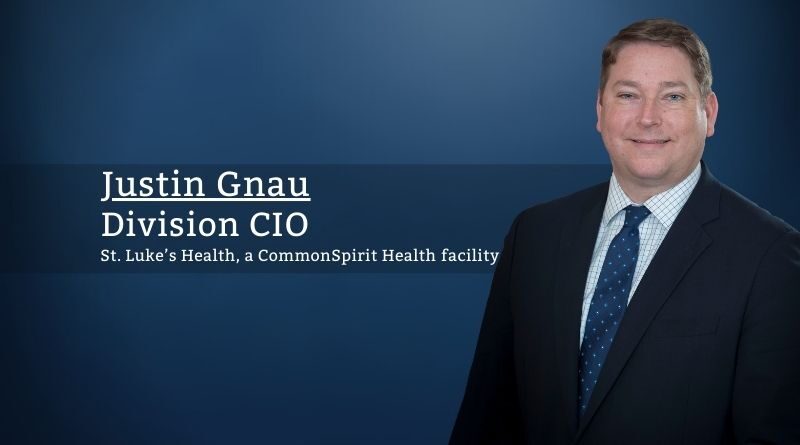Expanding Virtual Solutions Post-COVID Will Improve Health Care Access
By Justin Gnau, VP & Division CIO, St. Luke’s Health, a CommonSpirit Health facility
When the coronavirus struck, innovation became the lifeline for health care providers scrambling to deliver critical treatments and information without risking viral spread. In those first days of the pandemic, virtual care, telemedicine, and the technology behind them saw dramatic expansion — years of evolution packed into mere weeks.
Even as case numbers decline today, it’s clear that these solutions will keep growing. Leaders in the field will need to use the lessons of the past year to make these technologies even more personalized to patients and leverage them to address the disparities in health care access underscored by the pandemic.
Most importantly, we have to do a better job of making care more accessible to patients in their time of need. Many virtual solutions put in place during the health crisis are easily adaptable and scalable to challenges beyond COVID-19. They will help us do just that: channel response right to patients so they can receive immediate diagnoses and attention.
Our “virtual ICU” enabled community hospitals — which have smaller teams of critical care specialists — to care for the influx of severely ill patients during the initial COVID-19 surge.
At St. Luke’s Health in Texas, we relied on several technological solutions to help treat patients and support providers, many of which we plan to build upon and expand beyond our COVID-19 response.
Our “virtual ICU” enabled community hospitals — which have smaller teams of critical care specialists — to care for the influx of severely ill patients during the initial COVID-19 surge. A cart with speakers and video call capabilities was rolled to each patient’s bedside, allowing critical care physicians and nurses as far away as Nebraska to monitor ICU patients, review real-time data, and consult with the hospitalists on site.
Particularly at rural hospitals, the virtual ICU allowed us to connect smaller teams with highly skilled teams of specialists. The approach channeled specialty knowledge and capability to a broader group of patients — reducing the need to transport them to another facility.
Also, throughout the pandemic, and during the initial rollout of the COVID-19 vaccines, the chatbot on St. Luke’s website emerged as a critical and in-demand tool. Its core algorithm is a product of collaboration between a vendor and our information-technology team, infectious disease team, marketing team, and chief medical officer. Because of their close collaboration across disciplines, the bot predicts and answers vaccine- and virus-related questions just as our top infectious disease expert would.
The chatbot helped us to answer the community’s questions about COVID-19 symptoms and prevalence. It also helped us establish which patients needed to come to the hospital. And, when the time came, the feature was essential as we distributed information about the vaccine, vaccination eligibility, and appointment scheduling.
These two tools were crucial to patient care and our fight against the virus. And, their potential stretches much farther. The virtual ICU can help with staffing solutions in the face of a challenging nursing shortage. Plus, it’s a resource for staff with different experience levels to connect with colleagues at a teaching hospital like Baylor St. Luke’s Medical Center in the Texas Medical Center that encourages collaboration and questions.
The website chatbot also has proven its worth and potential. Pre-COVID, between 15 and 30 patients a day used it. At the highest point during the pandemic, 500 patients a day were asking the bot questions. Those numbers were even higher during the vaccine rollout, peaking at about 8,000 patients in a single day.
Thanks to the chatbot — and telemedicine and virtual appointments generally — patients spend less time in the waiting room or waiting for an appointment for non-urgent needs like prescription refills or consultations with nurses.
Neither of these solutions is a replacement for in-person care when necessary. Still, their refinement and perfection can better supply the care and convenience our patients and providers want. We can bring quality care to where they are and right to their own home in many cases.
This ability presents an important opportunity to address the unacceptable health disparities exacerbated by COVID-19. Patients can get the care they need at their own community hospital without being transported to another facility. They can get answers quickly about their symptoms and know sooner whether they need to miss work, see a physician in person, or quarantine from loved ones. It makes it easier for them to ask questions and work with a provider to address issues before they become serious health problems.
The key to maintaining these systems and making them successful is purposeful about our design as we continue to customize this technology beyond the pandemic. We need to keep these health disparities in mind. We’ve got the technology; we need to get it to the patients who can most benefit from it.
We want to further customize the chatbot to better anticipate patient questions and personalize it so patients can get the information without feeling like they are talking to a robot. But what about the patients who don’t have internet access? That’s one of many questions we’ve been asking ourselves as we expand our capabilities.
Moving forward, we must be thoughtful about the community partnerships we need to develop and the additional resources we can provide to ensure that these virtual tools are beneficial to all and not just to some.



